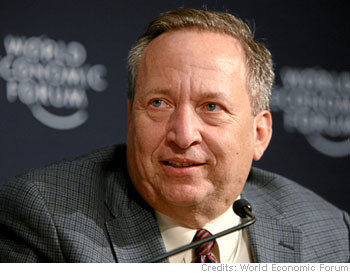 On his way out the door, Larry Summers joins the Build While It’s Cheap Chorus. Writing in The Financial Times, Alan Rappeport reports:
On his way out the door, Larry Summers joins the Build While It’s Cheap Chorus. Writing in The Financial Times, Alan Rappeport reports:
Larry Summers, the outgoing director of the White House National Economic Council, said the US must ramp up spending on domestic infrastructure to drive the economic recovery.
Speaking at the Financial Times’s View from the Top conference in New York, Mr Summers called it a “short-term imperative and a long-term macroeconomic imperative” that the US government increase infrastructure investment. He said that a combination of low borrowing costs, cheap building costs and high levels of unemployment in the construction sector made this the ideal time to rebuild roads, bridges and airports.
I presume that Summers did not come to this view just as he thought about leaving. But it is worth pointing out that he was one of the chief proponents of “timely, targeted, and temporary” as the recession was beginning. Consider this op-ed, reprinted from The Financial Times, from January 2008. Of the three criteria, the first two are benign — who would do something that would be untimely or untargeted? Here’s what he wrote about “temporary:”
Third, fiscal stimulus, to be maximally effective, must be clearly and credibly temporary – with no significant adverse impact on the deficit for more than a year or so after implementation. Otherwise it risks being counterproductive by raising the spectre of enlarged future deficits pushing up longer-term interest rates and undermining confidence and longer-term growth prospects.
This paragraph is motivated by the idea that what the government should be aiming to do primarily is to restore aggregate demand. The argument then considers possible fiscal changes based on how much they boost aggregate demand. I think that’s a bit of a trap — estimates of fiscal multipliers and the like are quite imprecise. More importantly, the deficit gets larger for dubious purposes. My view, in contrast, looks for opportunities to implement a set of prescribed spending (here, infrastructure for which the government takes responsibility anyway) at the time in the business cycle when it is most advantageous to do so. That is when prices go down or factors are idle — triggers that are much easier to diagnose. And once you start the spending plan, you boost aggregate demand as a by-product.
(I’ve been blogging ad nauseum about this. But if this is the first time you are reading my views, go here and here for the original presentation of the ideas.)


Leave a Reply